Keyword research might not be the most glamorous aspect of SEO.
In fact, sometimes it’s straight-up boring.
But it’s an essential ingredient in the secret sauce that gets your website noticed.
Think of this checklist as your trusty wingman helping you woo the search engines with irresistible keywords.
With this guide, your website will stand out like a shining beacon in the vast digital landscape.
So, buckle up and get ready to elevate your SEO game.
#1 — Plan your content

A well-planned content strategy helps you avoid wandering off on irrelevant tangents.
If you plan your content, you’re making sure that each piece of content has a purpose.
One highly effective approach to achieving this focus is to use the hub and spoke framework.
Think of it as a central “hub” of content. It acts as the cornerstone or main topic.
Surrounding this hub are related “spokes” that delve deeper into specific subtopics.
The hub and spoke framework accomplishes three main objectives:.
- It keeps your content focused. The framework makes sure that each piece stays on topic and caters to your target audience.
- It maintains relevance, as the spokes provide in-depth information that complements the hub. That flow creates a comprehensive and cohesive content ecosystem.
- It increases your content’s attractiveness to search engines. The interconnected nature of the framework improves your overall SEO.
Remember, a solid plan is the foundation upon which your SEO success is built.
Take the time to craft a content roadmap that’ll steer your website toward the coveted top spots in search engine rankings.
Here are some do’s and don’ts to make sure that you’re planning effectively for SEO.
Define your goals
Before you start planning your content, it’s important to set clear goals.
Are you looking to increase traffic, boost conversions, or build brand awareness?
If you know your goals, you can tailor your content to achieve your desired results.
Research your audience
Get to know your target audience inside and out.
Do you know what they want and what they’re struggling with?
If you know your audience, you can create content that truly resonates with them.
And the more you create content that resonates with them, the higher chance you’ll get more backlinks and social shares which ultimately helps them find you in search engines.
Spy on the competition
Take a sneak peek at what your competitors are doing. What’s working for them? What’s not?
Use this information to your advantage and identify opportunities to outshine your rivals.
Use tools to your advantage
Leverage SEO tools like Google Keyword Planner, Ahrefs, and SEMrush.
These tools are your secret weapons for finding high-performing keywords.
Don’t go overboard with keywords
While it’s essential to include relevant keywords in your content, don’t let them take over.
Keep your content natural and engaging, focusing on delivering value to your audience.
Don’t ignore long-tail keywords
Find specific, low-competition keywords.
They may not have the highest search volume, but they can drive targeted traffic.
So, make sure to incorporate them into your content plan.
Don’t forget about internal linking
As you plan your content, consider how it’ll link to other relevant pieces on your website.
Internal linking helps improve your site’s structure, user experience, and search engine rankings.
Don’t skimp on quality
In your quest for SEO success, never compromise on content quality.
High-quality content that offers value to your audience will always outshine keyword-stuffed, low-quality articles.
#2 — Arm yourself with a powerful keyword research tool — Semrush or Ahrefs
The days of half-hearted, haphazard keyword research are long gone.
If you want to make a real impact in the SEO world, it’s time to invest in a premium SEO tool like Semrush or Ahrefs.
These powerful weapons in your SEO arsenal will help you dig deep into the world of lucrative keyword opportunities.
But how do you wield these mighty tools?
I’ve got you covered with an overview on how to use both Semrush and Ahrefs for keyword research.
Not only that, I’ve also added some valuable tips to make the most of their useful features.
How to use Semrush for keyword research
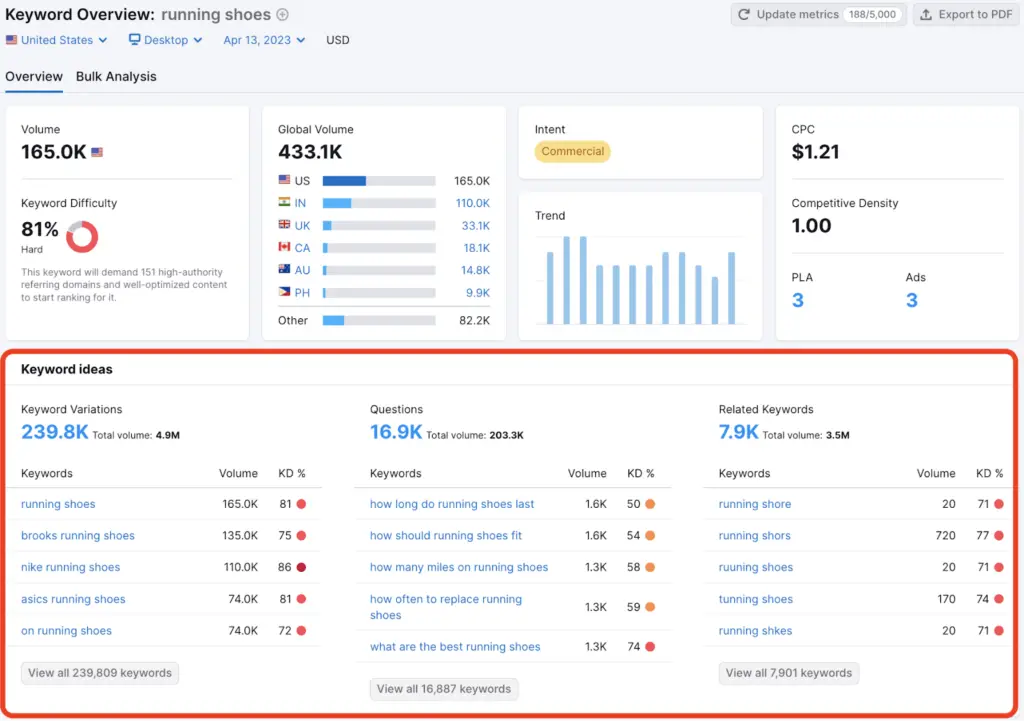
- Step #1 — Log in to your Semrush account.
- Step #2 — Click on “Keyword Overview” in the main menu.
- Step #3 — Type in the keyword or topic you want to research.
- Step #4 — Choose your preferred location and language.
- Step #5 — Click “Search” to see related keywords.
- Step #6 — Sort results by volume or difficulty.
- Step #7 — Analyse the SERP to see who ranks for the keyword.
- Step #8 — Use the “Keyword Magic Tool” to filter and refine your list.
Tips for using Semrush
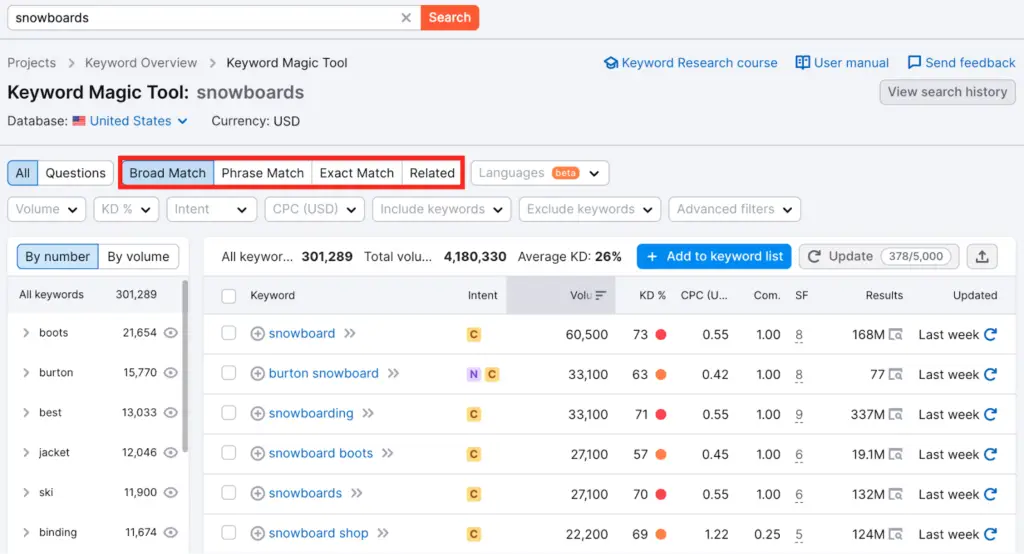
- Explore the “Phrase Match” and “Related Keywords” reports to discover long-tail keywords and related search terms.
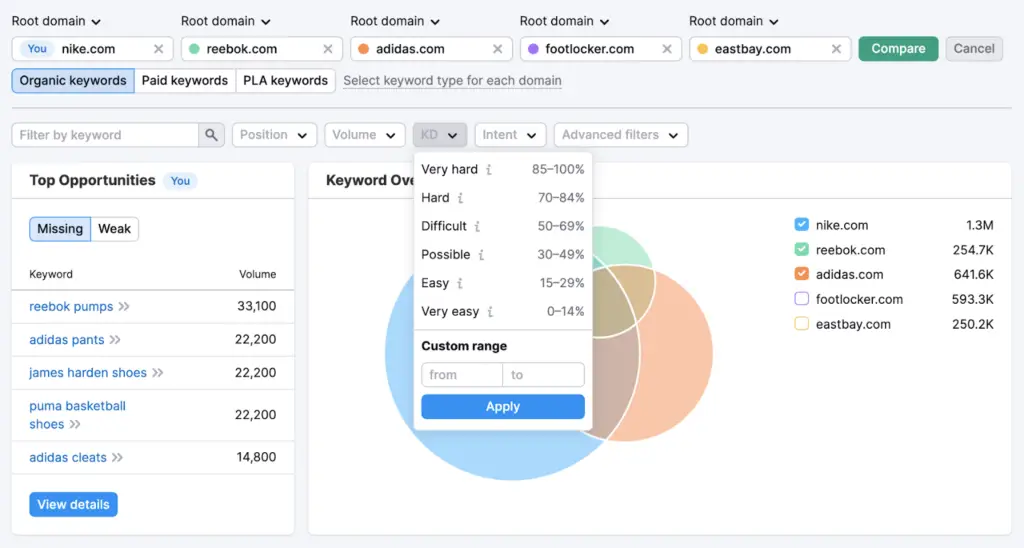
- Use the “Keyword Gap” tool to compare your website with your competitors and identify missing keyword opportunities.

- Analyse competitors’ organic search results to gain valuable insights and uncover strategies to improve your own rankings.
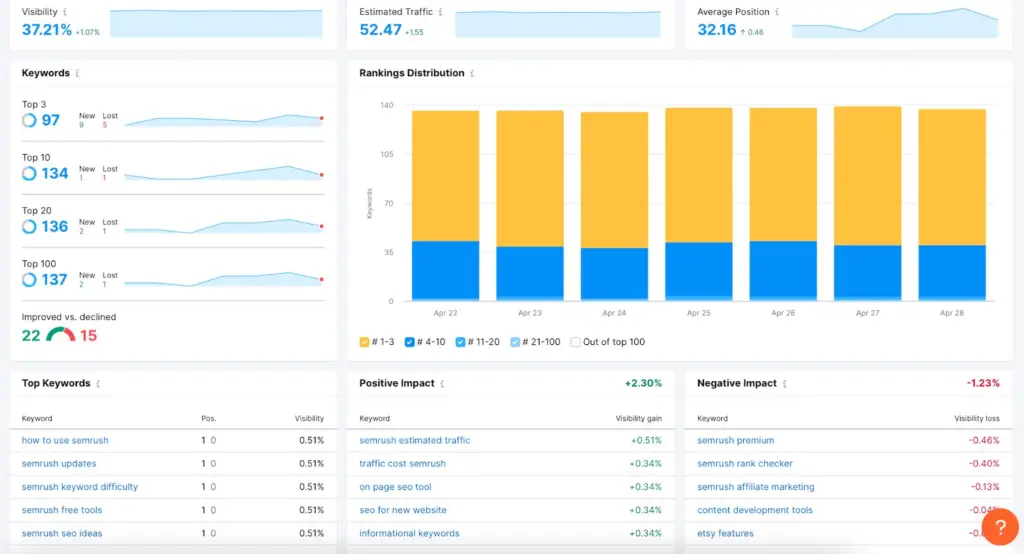
- Track your keyword rankings with the “Position Tracking” tool to identify trends and adjust your SEO strategy as needed.
How to use Ahrefs for keyword research
- Step #1 — Log in to your Ahrefs account and navigate to the Keyword Explorer tool.
- Step #2 — Enter a keyword or phrase related to your topic or industry in the search bar.
- Step #3 — Use the filters to narrow your results by search volume, difficulty, and other factors.
- Step #4 — Analyse the keyword ideas and related terms provided by Ahrefs. Select the ones that are relevant and have potential.
Tips for using Ahrefs

- Utilise the “SERP Overview” report for an in-depth look at the top-ranking pages for a specific keyword.
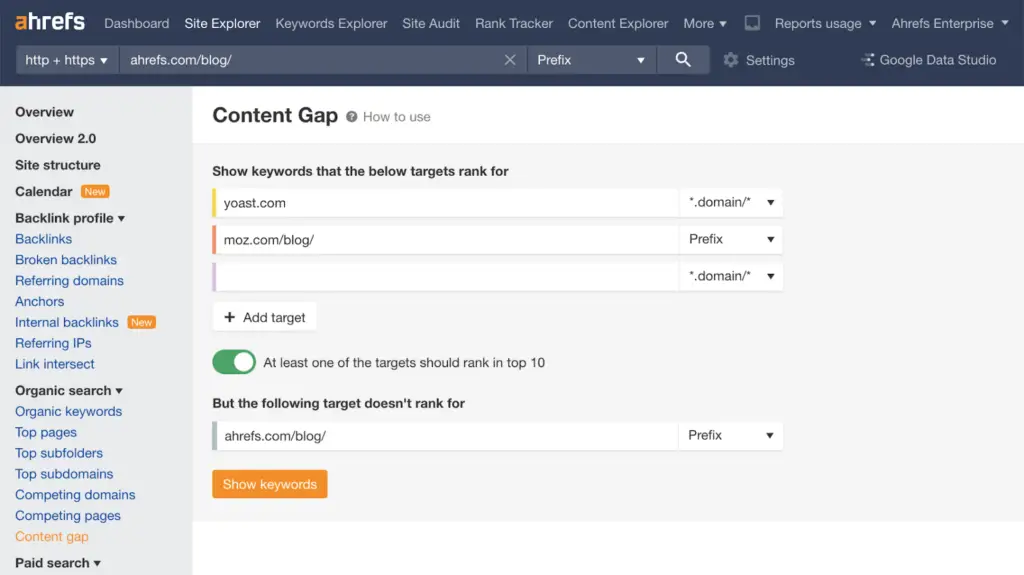
- Explore the “Content Gap” tool to compare your site with your competitors and discover keyword opportunities you may not be targeting yet.
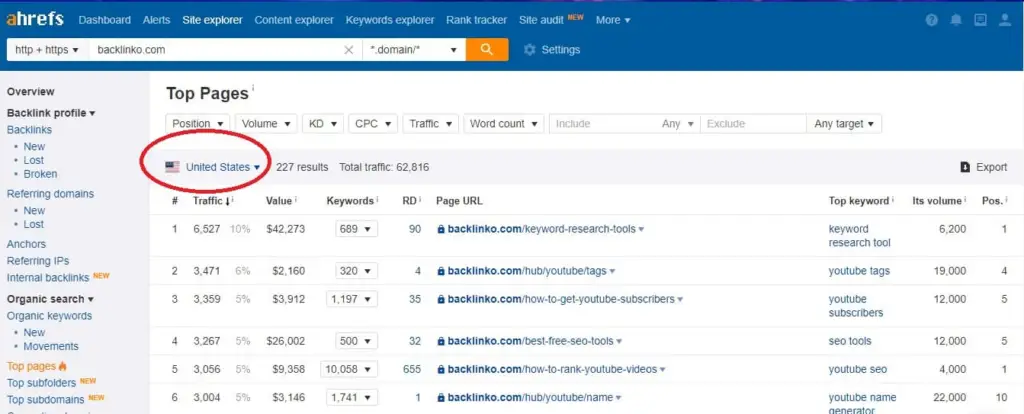
- Leverage the “Top Pages” report to analyse the top-performing pages of your competitors and uncover valuable insights and strategies.

- Use the “Rank Tracker” tool to monitor your website’s rankings for your target keywords over time, allowing you to adjust your SEO strategy accordingly.
Remember, the better your weapons, the stronger your SEO strategy will be.
#3 — Discover the “why” behind every search

This step is all about getting inside the minds of your audience and figuring out what they truly want.
It’s important for you to take this step so you can craft content that connects with your target audience.
Don’t be a keyword zombie.
Don’t mindlessly chase after high search volume keywords without considering search intent.
Instead, plan carefully which keyword you’re going to use.
Search engines like Google have become increasingly sophisticated in delivering content to users.
If you understand search intent, you can write content that’s aligned with what your ideal readers want.
Here are some things you can do to improve your understanding of search intent:
Analyse the top-ranking websites
Take a close look at the websites that are ranking high for your target keywords.
Ask yourself, “Why are they ranking so high, and how can I beat them?”
This will help you identify what’s working well for them.
Identify the different types of search intent
There are four main types of search intent that you should be paying attention to.
- Informational
This is for users looking for information on a specific topic or question.
They might be trying to learn something new, clarify a doubt, or find quick facts.
Informational queries often start with words like “how,” “what,” “why,” or “when.”
- Navigational
This search intent is for users who perform navigational queries when they want to reach a specific website, page, or online destination
They might already know the website they’re looking for but use the search engine as a tool to get there.
To optimise for navigational queries, make sure your website is easily discoverable.
That includes having a clear structure, and includes relevant keywords in URLs and meta tags.
Here are some examples of keywords associated with navigational intent:
- Facebook login
- YouTube trending videos
- Amazon customer service
- Transactional
As the name suggests, this intent means the user performs a specific action or completes a task.
These tasks can be like making a purchase, signing up for a service, or downloading an app.
Transactional intent queries often look like these: “buy iPhone 14”, “order pizza online”, “sign up for online course”.
- Commercial
These queries show that users are in the research phase before taking an action.
It could be in the form of review hunting, comparisons, or recommendations.
Here are some keyword examples in live action:
- Reviews: “Samsung Galaxy S22 review” or “best wireless headphones review.”
- Comparisons: “MacBook Pro vs. Dell XPS” or “Zoom vs. Microsoft Teams.”
- Recommendations: “top 10 travel destinations” or “best budget smartphones 2024.”
- How-to guides and tutorials: “how to choose the right camera lens” or “tips for using Adobe Photoshop.”
- Pricing and feature information: “iPhone 14 price” or “features of Tesla Model Y.”
Use long-tail keywords and questions

Long-tail keywords and questions can provide valuable insights.
These two can reveal the search intent behind a particular query.
Use these specific keywords and questions in your content to make your content more relevant and valuable.
Optimise your content for search intent
Once you’ve identified the search intent behind your target keywords, it’s time to optimise your content.
This might involve tweaking your headlines, subheadings, and meta descriptions.
And don’t forget the structure. You can go for “How To”, “FAQ”, or “Listicles”.
#4 — Stalk your competition
In the game of SEO, knowledge is power.
By understanding what your competitors do, you can discover hidden opportunities.
Who knows, you may even discover a winning strategy that leaves them in the dust.
And let’s be real.
Snatching your competition’s keywords saves a lot of time.
After all, in the cutthroat world of SEO, it’s survival of the fittest.
Only those who adapt and innovate will rise to the top.
Here are some steps to stalk your competition and crowdsource ideas like a pro:
Analyse your competitors’ websites
Dive deep into their content, site structure, and backlink profile.
By doing this, you can uncover the keywords and strategies that are driving their success.
Tools like Semrush and Ahrefs can help you with this task.
Monitor their social media presence
Keep an eye on your competitors’ social media channels to get a feel for their content strategy, audience engagement, and trending topics.
Explore Quora and other Q&A platforms
By browsing popular questions and answers related to your niche, you can discover emerging trends, pain points, and interests of your target audience.
This information can inspire new content ideas and help you address the needs of your audience more effectively.
Leverage TopicMojo and other content ideation tools
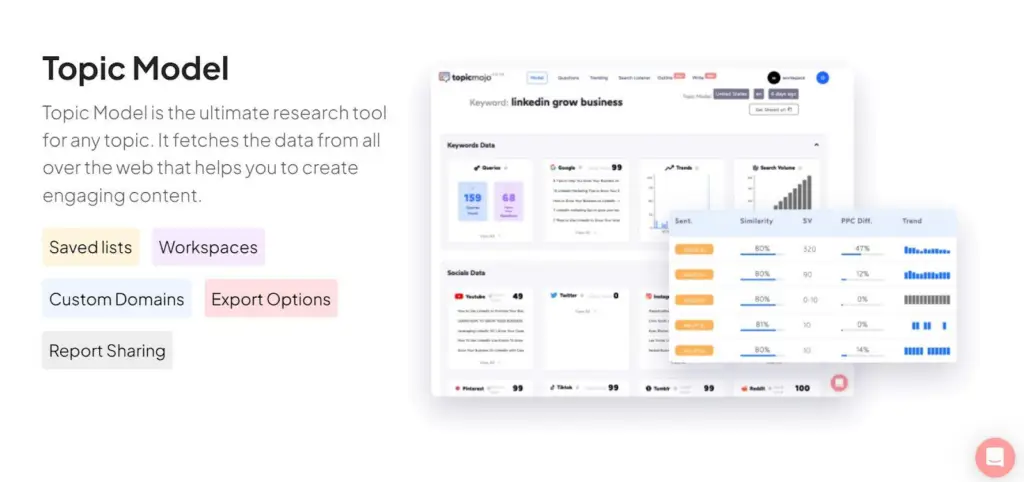
These tools can help you generate content ideas and uncover trending topics that will resonate with your target audience and drive organic traffic to your website.
#5 — Running out of ideas? Tap the power of ChatGPT
There’s no need to let writer’s block get you down when you have a secret weapon like ChatGPT at your disposal.
This AI-powered tool can help you come up with keyword ideas that’ll leave your competitors in the dust and set your website on a path to SEO domination.
But be warned: using ChatGPT may cause sudden bursts of inspiration and a desire to take over the world (or at least your niche).
So buckle up and get ready for a wild ride as you unlock the true potential of ChatGPT to supercharge your keyword research and content creation process.
Here’s how to use ChatGPT to expand your horizons and conquer the world of keywords:
- Step #1 — Access ChatGPT. First, navigate to the ChatGPT platform and log in to your account.
- Step #2 — Set the stage. Briefly describe your niche, target audience, and content goals. This will help ChatGPT understand the context and generate more relevant keyword ideas for you.
- Step #3 — Ask for keyword suggestions. Simply ask ChatGPT to provide you with keyword ideas related to your topic or industry. You can be as specific or broad as you like, and ChatGPT will list potential keywords for you to explore.
- Step #4 — Refine your list. Go through the keyword suggestions provided by ChatGPT. Find keywords that are relevant to your audience.
- Step #5 — Explore related topics and questions. Ask ChatGPT to suggest related topics or questions. This can help uncover new opportunities for you to take advantage of.
- Step #6 — Combine your research with other tool like Semrush or Ahrefs. Remember, ChatGPT is just one of the many tools at your disposal. Combine its insights with the information you’ve gathered from other sources.
#6 — Organise your keywords
You don’t need to be a Type-A personality to stay organised and focused with your keywords.
In fact, with a touch of finesse and a well-thought-out strategy, you’re all set.
But remember, not every keyword is created equal.
Choose your battles wisely and keep your eyes on the prize as you navigate the ever-changing landscape of SEO.
Here’s how to stay organised and focused as you embark on your keyword conquest:
1. Create a master keyword list
Gather all your keyword ideas, suggestions, and research into one comprehensive list.
This master list will be the foundation for your keyword management process.
You can start with a simple Google sheet to make it easy to track and evaluate your progress.
2. Group keywords by topic or theme
Organise your master keyword list into logical groups or clusters based on related topics, themes, or user intent.
Group your keywords based on your pillar topic.
3. Evaluate keyword potential
Check the potential value of each keyword.
You can start by considering factors like search volume, competition, relevance, and intent.
And then, prioritise the keywords that will bring results for your business.
Remember, not all keywords carry equal weight.
4. Assign priority levels
Use a simple priority system, such as high, medium, or low, to rank your keywords.
Their rankings can be based on their potential value and importance to your content strategy.
The priority levels will help you allocate your resources and efforts more effectively.
That way, you are pouring your focus on the keywords that truly matter.
5. Track your progress and adjust as needed
Keep an eye on your keyword rankings, traffic, and conversions over time.
That will help you evaluate the success of your SEO efforts.
Be prepared to adjust your strategy as needed.
Your adjustments will depend on results, emerging trends, and changes in your industry or target audience.
#7— Stay consistent and keep tabs on your progress
Embarking on the journey of keyword research isn’t a one-time fling.
It’s a long-term relationship that requires commitment, consistency, and a willingness to adapt.
Luckily, tools like Ahrefs, Semrush, and Google Search Console are here to help you stay in tune with your SEO efforts.
Consistency is key, so don’t ghost your keyword research efforts.
Instead, follow these steps to cultivate a flourishing keyword strategy:
1. Schedule regular check-ins
Set aside time in your calendar for routine keyword research check-ins.
Make sure to stay current with trends, algorithm updates, and changes in your niche.
2. Monitor your rankings
Use tools like Ahrefs, Semrush, and Google Search Console to track your keyword rankings.
From there, you can assess the effectiveness of your SEO strategy.
Keep an eye out for any fluctuations and investigate the causes behind them.
3. Refine your keyword list
As you gather data on your keyword performance, refine your list by adding new opportunities.
You can start eliminating underperforming keywords, and adjusting your priorities as needed.
4. Analyse your competition
Regularly analyse your competitors’ websites, content, and backlink profiles to stay informed.
By keeping an eye on their strategies, you can identify new keyword opportunities.
5. Adjust your content strategy
This is where the reports come in handy.
By having measurable numbers, you can make data-driven decisions to adjust your content strategy.
You can start by focusing on topics and keywords that deliver the best results.
6. Keep learning and evolving
Stay informed about the latest SEO developments.
Every day, there are new practises, and algorithm updates.
Always be prepared to adapt your keyword research strategy when needed.
It’s time to do some keyword research
With this seo keyword research checklist by your side, you’re all set to level up your skills and make waves in the search engine world.
Keep in mind, though, that the road to SEO success is a continuous adventure, full of surprises and new discoveries.
So as you explore the exciting realm of keyword research, remember to enjoy the ride and always stay open to learning new tricks of the trade.
If at any point you feel stuck or overwhelmed, don’t sweat it.
Help is just a call away.
There’s no shame in reaching out to an expert who can lend a hand and guide you through the ins and outs of SEO.
Just stay dedicated.
Continue to embrace the learning process and know when to call in the pros.

